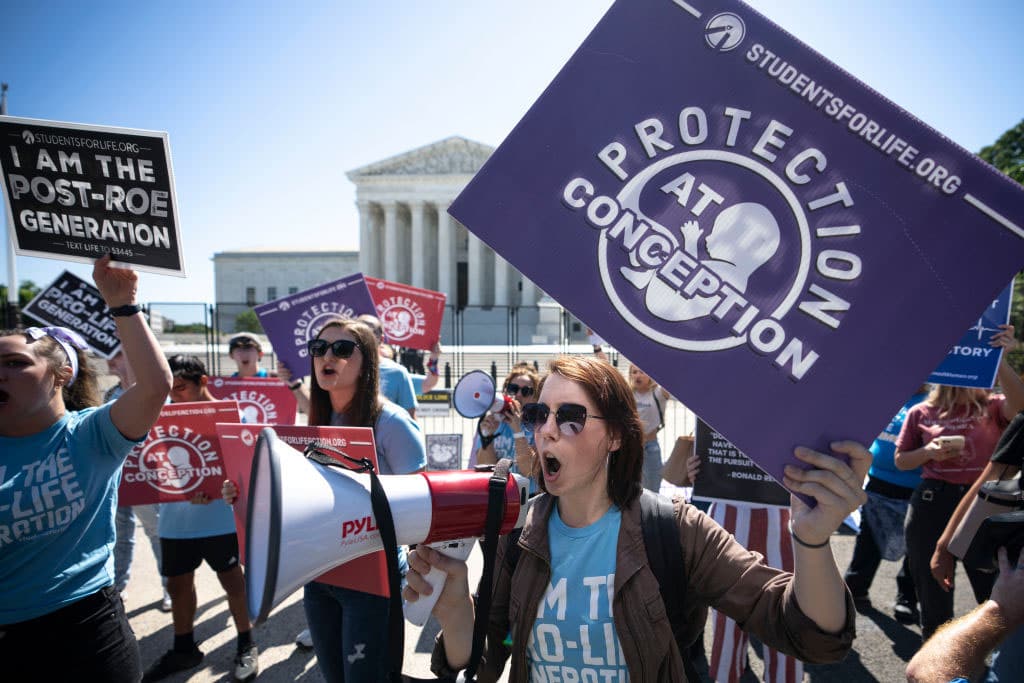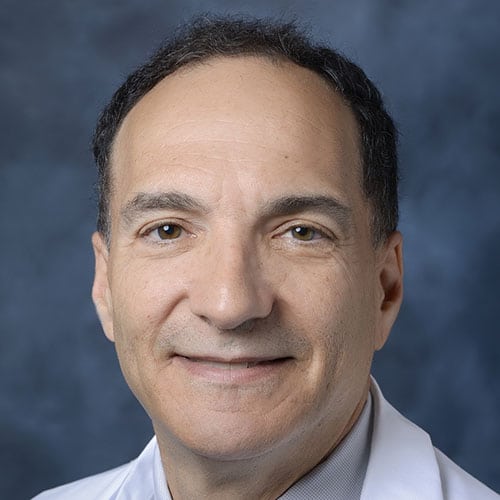 Anti-abortion activists rally in front of the U.S. Supreme Court on June 6, 2022 in Washington, DC. (Photo by Drew Angerer/Getty Images).
Anti-abortion activists rally in front of the U.S. Supreme Court on June 6, 2022 in Washington, DC. (Photo by Drew Angerer/Getty Images). As a physician, I worry about the impending overturn of Roe v. Wade. I remember my older colleagues relating frightening pre-Roe stories of “Septic OB,” the LA County Hospital ward where physicians treated victims of botched abortions fighting for their lives. The political climate in California will likely prevent a return to those tragic days. However, much of the country may prove different.
On most political issues physicians reflect the diversity of our community. Abortion seems to be an exception. Few abortion opponents wear white coats. Pragmatism born of experience with human frailty and with the suffering of unwanted pregnancies overrides devotion to merely potential lives.
Physicians’ approach to abortion fits well with the legal and medical reasoning of Justice Blackmun’s majority opinion in Roe. Indeed, Blackmun may have been selected to write the opinion due to medical sophistication from years as counsel to the Mayo Clinic prior to joining the Court. As Blackmun noted, the abortion controversy begs the question of when life begins, a matter he admitted the Court could never conclusively resolve.
Therein lies the rub.
Pro-choice advocates deny the government’s right to interfere with women’s private medical decisions while anti-abortion advocates counter with the government’s obligation to protect lives. So, whether an embryo is a life and whether it assumes rights such as government protection poses the ultimate question.
Human development occurs as a continuum from a single fertilized egg to a term baby. For those devoted to the preservation of life, the simplest approach is to protect the entire continuum. Although this desire to protect life is laudable, it’s difficult to accept the contention that a fertilized egg (zygote), still invisible to the naked eye, assumes the rights and protections of a term baby. Between a third to half of zygotes never implant and their loss is not usually considered a loss of life. If it were, anti-abortion protesters would also be protesting intra-uterine contraception (IUDs), which prevents implantation.
So, if legal protection does not begin with fertilization, where should it start? To answer that question, Blackmun focused on various levels of protection afforded by different societies over time. He noted that “quickening,” the time when a fetus exhibits movement, was often used as a point at which the fetus could be considered an independent life. Prior to that point, many traditions, including Jewish ones, did not grant absolute rights and protections. Blackmun noted that historic penalties for abortion focused more on protecting the life of the mother, which, in more primitive medical times, could be jeopardized by an abortion. The fact that legal regulation varied with the stage of development demonstrated the traditional acceptance of meaningful distinctions among the stages of the continuum.
From a medical perspective, the outstanding feature of Blackmun’s opinion was his use of trimesters to make meaningful distinctions along the continuum of development. In the first trimester, well before independent viability, the mother’s interests predominate, and her legal autonomy protects her decisions. In the third trimester, when the fetus becomes independently viable, the interest of the state in protecting life transcends the rights of the mother. In the second trimester, the rights of the fetus and the mother must be balanced.
It provided a balanced approach that aligned medical and developmental realities with the law.
Blackmun’s decision did not simply legalize abortion on demand. It provided a balanced approach that aligned medical and developmental realities with the law. The thoughtfulness of the decision was recognized by the votes of seven Justices including five nominated by Republican presidents. In contrast, all five justices reported to support overturning Roe were nominated by Republican presidents. As four are Catholics and the fifth was raised Catholic they can reasonably be suspected of reading their own personal religious views into the law.
Justice Alito and his like-minded opponents of Roe should re-think their draft opinion. They should ask why American women and their physicians should respect the reversal of Roe from a divided Court when a more unified Court ruled differently. Has the Constitution changed? Are today’s Justices more insightful than the seven that supported Roe? The Blackmun opinion represented the middle way, the consensus approach still supported by most Americans and highly defensible under the law. The Justices should respect precedent and step back from their threat to the rights of women.
Daniel Stone is Regional Medical Director of Cedars-Sinai Valley Network and a practicing internist and geriatrician with Cedars Sinai Medical Group. The views expressed in this column do not necessarily reflect those of Cedars-Sinai.























 More news and opinions than at a Shabbat dinner, right in your inbox.
More news and opinions than at a Shabbat dinner, right in your inbox.